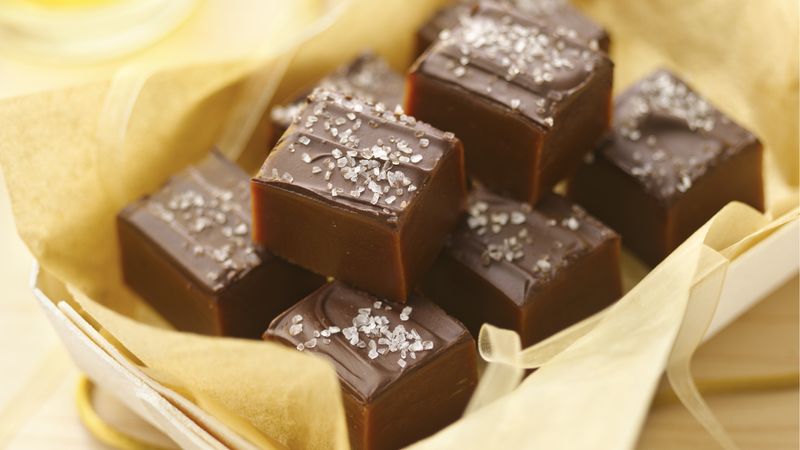
Author: Umi Fatimah
In the culinary world, salt is an important ingredient used to flavor food. There are various types of salt that can be used, including sea salt and table salt.
So what is the difference between the two, and which is better for cooking when compared? So that you are no longer confused, yuk, see the explanation below!
Read Also: Know the Difference, Slow Cooker vs Instant Pot vs Pressure Cooker
About Sea Salt
As the name suggests, sea salt comes from sea water which undergoes an evaporation process. This evaporation process produces salt crystals which contain important minerals, such as sodium, magnesium, chloride and calcium.
In addition, sea salt tends to have a larger crystal size, which means it contains less sodium.
Apart from being used as a kitchen spice, sea salt is also used in various beauty and health products, such as skin scrubs and detoxification therapy.
About Table Salt
You must be familiar with table salt, right? One of these kitchen ingredients is very commonly used in cooking to add flavor to food.
Table salt is a product of mining from the ground, which is processed to remove other minerals that are involved in the mining process. The texture of table salt is finer so it dissolves more easily in water.
Also known as table salt, table salt is also usually added with additives to prevent clumping and other nutrients (such as iodine) so that its composition resembles sea salt.
Read Also: Hidden Salt Content in Kitchen Ingredients
Difference between Sea Salt and Table Salt
So, what are the differences and similarities between table salt and sea salt? Basically, the main difference between sea salt and table salt lies in the processing method and mineral content. Here are the brief details:
Texture: Table salt has a finer texture and dissolves quickly in water, while sea salt has a coarser texture and feels crunchy when used as a ‘finishing’ dish.
Composition: Table salt and sea salt generally have the same nutritional value and sodium content, but their exact composition is different. Table salt is usually enriched with iodine and anti-caking agents, while sea salt contains small amounts of natural minerals.
Feel: Sea salt contains minerals, which means it has a ‘richer’ taste than table salt. In addition, the crystal grains of table salt are finer than sea salt so the amount of sodium in table salt is higher. Because the amount of sodium in table salt is more, table salt gives a saltier taste to dishes.
Yodium: Most table salt on the market has added iodine, while sea salt is not iodized.
Shelf life: Pure sea salt can be stored indefinitely. In contrast, table salt has a shelf life of around 5 years because iodine and preservatives in the form of anti-caking agents have been added.
Price: Sea salt is more expensive than table salt because it is produced in small quantities and harvested manually, which uses a lot of labor.
Read Also: Salted Chili Shrimp Recipe
Which Salt is Best for Cooking?
Choosing the right type of salt for cooking actually depends on a variety of factors, including personal preference, desired taste, and the dish being made.
This is because both sea salt and table salt have their own characteristics. However, there are several considerations to help you make a decision in choosing between sea salt and table salt:
Uses of Sea Salt in Cooking
- Seasoning and finishing: Sea salt can be the perfect choice to add flavor and texture to salad, grilled vegetables (roasted vegetables), and steak.
- Garnish on drinks: Bartenders usually add sea salt as garnish and additional flavors at the rim of the glass, like a Margarita cocktail
- Garnish on cake: especially good for topping baked goods, such as cookies, brownies, or bread. Large, crunchy sea salt crystals will add texture and flavor to dishes.
- Food preservation: Sea salt can also be used to preserve food, especially fish and meat.
Uses of Table Salt in Cooking
- Cooking and baking: Table salt contains iodine which is very important to keep thyroid hormone function stable.
- General spices: Table salt is considered a multi-purpose salt and is the type of salt most commonly used in various dishes, such as soups, stews, and various other dishes.
- Maintain food freshness: Table salt is often used in pickling and canning to maintain the freshness of vegetables and other foods.
In choosing between sea salt and table salt, it really comes down to personal preference. Both sea salt and table salt are used in cooking and flavoring food. So, choose the salt that you like best and fits your budget. Another important thing is to pay attention to the dosage so as not to overdo it, because excessive salt consumption can have a bad impact on health.

 Atsarina Luthfiyyah (Senior Editor)
Atsarina Luthfiyyah (Senior Editor)
Has educational experience in the fields of Culinary and Journalism. His hobbies are writing, traveling and cooking. Masters in Communication Sciences at Gadjah Mada University
Contact Us at [email protected]

